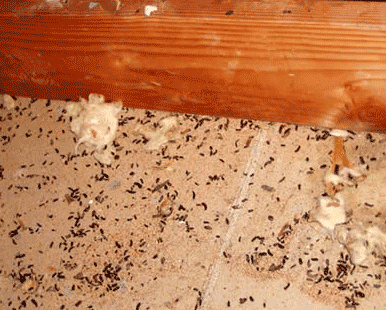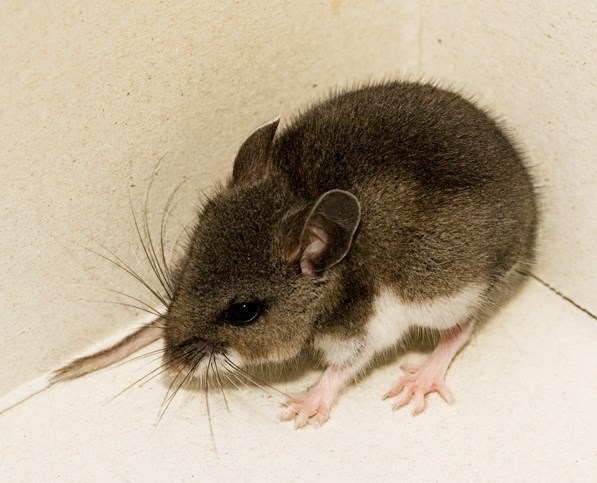The Government of Saskatchewan is shining light on one of those, as the spring months are the time when the risk for hantavirus infection is at it’s highest – and the danger is present wherever you might find rodents.
“Humans can be exposed to hantavirus when inhaling contaminated air caused by the droppings, urine and saliva of infected rodents,” Dr. Saqib Shahab, Saskatchewan’s Chief Medical Health Officer said in a press release. “Hantavirus can cause illness in humans including a lung related illness known as hantavirus pulmonary syndrome, which can be fatal.”
Exposure is most likely to occur when cleaning enclosed buildings (grain bins, sheds, barns, garages, trailers, cottages and home) or farm equipment after the winter months.
 Mouse droppings in a bin or barn could be a sign that hantavirus is present. (Government of Sask photo)
Mouse droppings in a bin or barn could be a sign that hantavirus is present. (Government of Sask photo)- Ventilate the building by opening doors and windows for at least 30 minutes before cleaning;
- Use wet mopping methods and wear rubber or plastic gloves;
- Wear goggles and a well-fitting N-100, R-100 or P-100 (formerly HEPA) type filter mask when cleaning contaminated areas;
- Dampen areas contaminated with rodent droppings with bleach disinfectant (one part bleach to nine parts water), let sit for 10 minutes, and remove droppings with a damp mop or cloth;
- Avoid using dry cleaning methods such as dusting, sweeping, vacuuming or air-hosing;
- Steam clean, shampoo or spray upholstered furniture with a detergent, disinfectant or a mixture of bleach and water; and
- Wash clothes and bedding with detergent in hot water.
If exposed to the virus, symptoms will start to appear one to six weeks and include tiredness, fever, muscle aches, cough, headaches, dizziness, nausea and vomiting. Some people develop severe symptoms -- including difficulty breathing -- that can be life threatening. Seek medical attention immediately if you have a cough, fever, and shortness of breath.
As of May 13, a total of 35 people with hantavirus pulmonary syndrome have been reported in Saskatchewan since 1994, 11 of whom died.
For more information on hantavirus, visit the government website at and HealthLine Online at www.healthlineonline.ca.
For advice on symptoms or when to seek care, call HealthLine 811.




